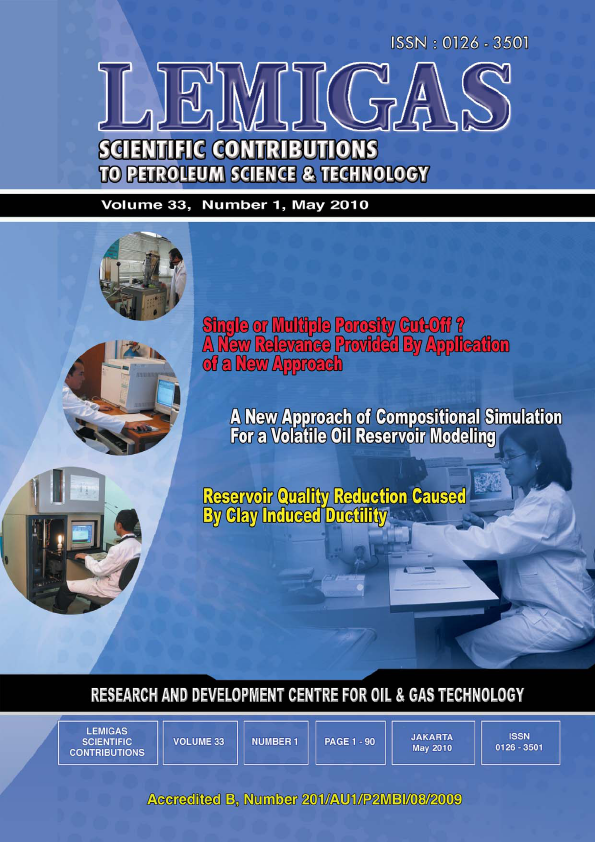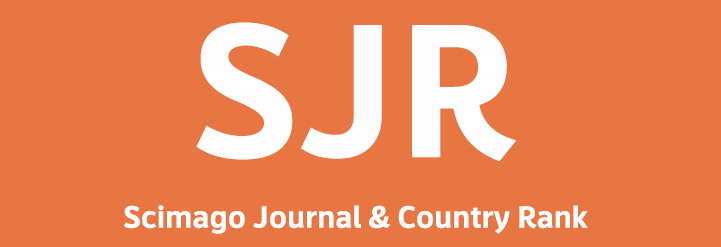Worksheet Screening Of Co2 Eor Sequestration Potential In Indonesia
DOI:
https://doi.org/10.29017/SCOG.33.1.806Keywords:
Screening CO2 EOR, depleted oil field, CO2 sequestration, streamline simulator, cash flow modelingAbstract
CO2 injection into subsurface with the purpose to increase incremental oil production had been popularized in 1970s in US. Nowadays, this type of EOR methods not only offers more oil but also utilizing reservoir as CO2 storage in the context of CO2 emission abatement. The objective of this research is to produce simple and efficient worksheet on EXCEL base in order to asses and screen out quickly the potential of implementation of CO2 EOR sequestration in depleted oil fields in Indonesia.
Key elements of this worksheet comprise engineering aspect and economical aspect. A sequence workflow of technical performance of CO2 flooding was done using streamline simulator in which outstanding output from simulator needs robust data preparation and cautious parameter set up. For the case studied here, total incremental oil recovery at the end of the project is 4.52% from original oil in place (IOIP) or about 6.23 MMSTB. “Prophet†was used to simulate CO2 sequestration during CO2 EOR incorporating residual trapping. The amount of CO2 trapped in reservoir was acquired by subtracting the total injected CO2 with CO2 produced. The total capital expenditure for sequestration CO2 EOR studied here is estimated $48.3 MM. It is expected that $16.5 MM will be placed in service by 1st year with the remaining $31.7 MM to be placed in service by 2nd year. Annual average operating cost was estimated to be $5.4 MM. As for fiscal terms, the following assumptions have been incorporated into the economic evaluations: (1) FTP 10%, (2) Investment Credit 17%, (3) Contractor Oil Split 26.6018%, (4) Government Split 73.3982%, and (5) Tax 44%. The economic analyses were carried out based on the project life time 7 years and the sales of incremental oil amount 5.6 MMSTB with an assumption that price for oil was $68 per barrel based on monthly average OPEC Basket Price during April-09 until March-10. Economic results of the development with discount factor 7 percent as indicated has a Contractor DCF Rate of Return 53.3 percent, Contractor Net Present Value $31.3 MM, and revenue to the Government of Indonesia $188.2 MM. With this economic indicator, the project of Sequestration CO2 EOR is economically feasible. The developed worksheet enables to do quick judgment on the viability a CO2 EOR sequestration project hence make it easier to someone who wants to screen out a large number of reservoirs rather than using detailed numerical simulator. It will much more saved time and decrease works intensity.
References
(Eds.), 2005, IPCC, Carbon dioxide capture and
storage, - Cambridge University Press, UK. pp
or
CCS National Workshop, 2008, Summary of Carbon
Capture and Storage National Workshop,
Jakarta 30-31 October 2008.
Davison, J., Freund, P., and Smith, A., 2001, Putting
Carbon Back Into The Ground, IEA
Greenhouse Gas R&D Programme.
Green W. Don and Willhite, G. Paul, “ Enhanced
Oil Recovery “, Society of Petroleum Engineers
Richarrdson, Texas, USA, 1998.
H.K. van Poollen and Associates, Inc., “Fundamental
of Enhanced Oil Recovery “, Tulsa,
Oklahoma, 1980.
IEA, 2008, Energy Technology Analysis: CO2
Capture and storage-A key carbon abatement
option, International Energy Agency.
Jarrel, P.M., Fox, C.E., and Stein, M.H., †Practical
Aspects of CO2 Floodingâ€, Society of Petroleum
Engineers Monograph Series,
Richardson, Texas. 2002
J.J. Taber , F.D. Martin , R.S. Seright, “ EOR
Screening Criteria Revisited Part 1: Introduction
to Screening Criteria and Enhanced Oil Recovery
Field Projectsâ€, SPE Resevoir Engineering
Paper, Mexico, Agust 1997.
Kadir, Abdul Wahab. 2004. Risiko Bisnis Sektor
Hulu Perminyakan (Analisis Teknis dan
Finansial). PT Pradnya Paramita. Jakarta.
Prentice G. Crell, 2008. EOR CO2 Workshop –
Society of Indonesian Petroleum Engineers.
Qi, R., Tara, C., and Blunt, M.J., “Design of Carbon
Dioxide Storage in Oilfieldsâ€, Paper SPE
2008.
Siregar, S., “Teknik Peningkatan Perolehan
(EOR)â€, Institut Teknologi Bandung, Bandung.
Downloads
Issue
Section
License
Copyright (c) 1970 SCIENTIFIC CONTRIBUTIONS OIL AND GAS (SCOG)

This work is licensed under a Creative Commons Attribution 4.0 International License.
Authors are free to Share — copy and redistribute the material in any medium or format for any purpose, even commercially Adapt — remix, transform, and build upon the material for any purpose, even commercially.
The licensor cannot revoke these freedoms as long as you follow the license terms, under the following terms Attribution — You must give appropriate credit , provide a link to the license, and indicate if changes were made . You may do so in any reasonable manner, but not in any way that suggests the licensor endorses you or your use.
No additional restrictions — You may not apply legal terms or technological measures that legally restrict others from doing anything the license permits.














